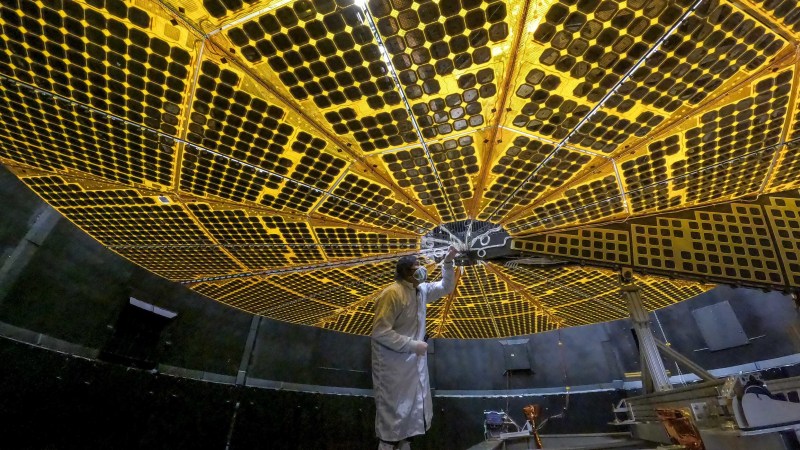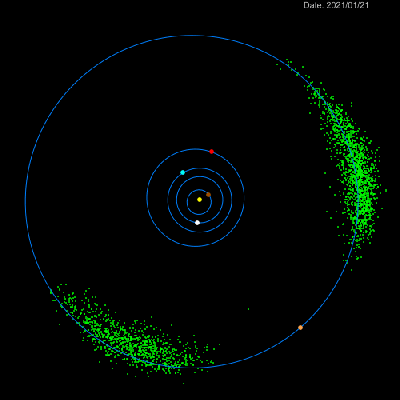NASA’s Lucy Stretches Its Wings Ahead of Trojan Trek

The good news about using solar power to explore space is there are no clouds to block your sunlight. Some dust and debris, yes, but nowhere near what we have to deal with on planets. The bad news is, as you wander further and further out in the solar system, your panels capture less and less of the sunlight you need for power. NASA’s Lucy spacecraft will be dependent on every square inch, so we’re happy to hear technicians have successfully tested its solar panel deployment in preparation for an October 2021 launch.

Lucy’s 12-year mission is to examine one Main Belt asteroid and seven so-called Trojans, which are asteroids shepherded around the Sun in two clusters at Lagrange points just ahead and behind Jupiter in its orbit. The convoluted orbital path required for all those visits will sling the spacecraft farther from the sun than any solar-powered space mission has gone before. To make up for the subsequent loss of watts per area, the designers have done their best to maximize the area. Though the panels fold up to a package only 4 inches (10 centimeters) thick, they open up to an enormous diameter of almost 24 feet (7.3 meters); which is enough to provide the roughly 500 watts required at literally astronomical distances from their power source.
Near-Earth asteroids are exciting targets for exploration partly because of the hazards they pose to our planet. Trojan asteroids, thought to be primordial remnants of the same material that formed the outer planets, pose no such danger to us but may hold insights about the early formation of our solar system. We’re already eagerly anticipating the return of OSIRIS-REx’s sample, and Hayabusa2 continues its mission after so many firsts. An extended tour of these farther-off objects will keep us watching for years to come. Check out the video embedded below for Lucy’s mission overview.
Post a Comment